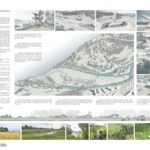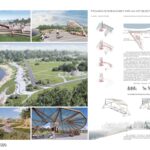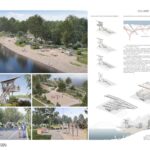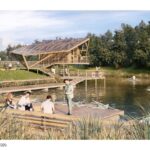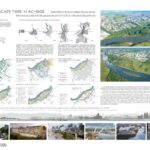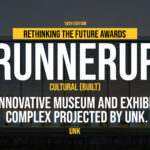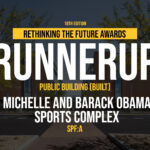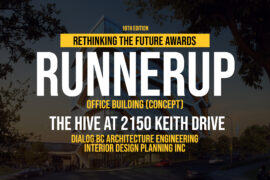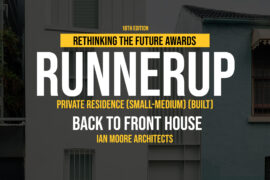Initiating and expanding the role of the author’s team in solving the local task – the river embankment project, we, guided by the status of Achinsk as the base city of the macro-district, decided to participate in the socialization of the urban development process, trying on the role of a methodologist-integrator of interdisciplinary activities in building a dialogue and public modeling of the essence of the city, its spatial city-forming structuring.
Rethinking The Future Awards 2025
Second Award | Public Landscape (Concept)
Project Name: Water-landscape park in Achinsk
Category: Public Landscape (Concept)
Studio Name: OOO “ADM” (OOO “Architecture Design Modeling”)
Design Team: Alexey Myakota – author, chief architect, Lidiia Gribakina – coauthor, architect, Elena Elizarova – chief engineer
Area: 146 hectares
Year: 2023-2025
Location: Achinsk, Krasnoyarsk region, Russia
Render Credits: OOO “ADM”, Mikhail Krivorotov, Anstasiia Orlova
Other Credits: –
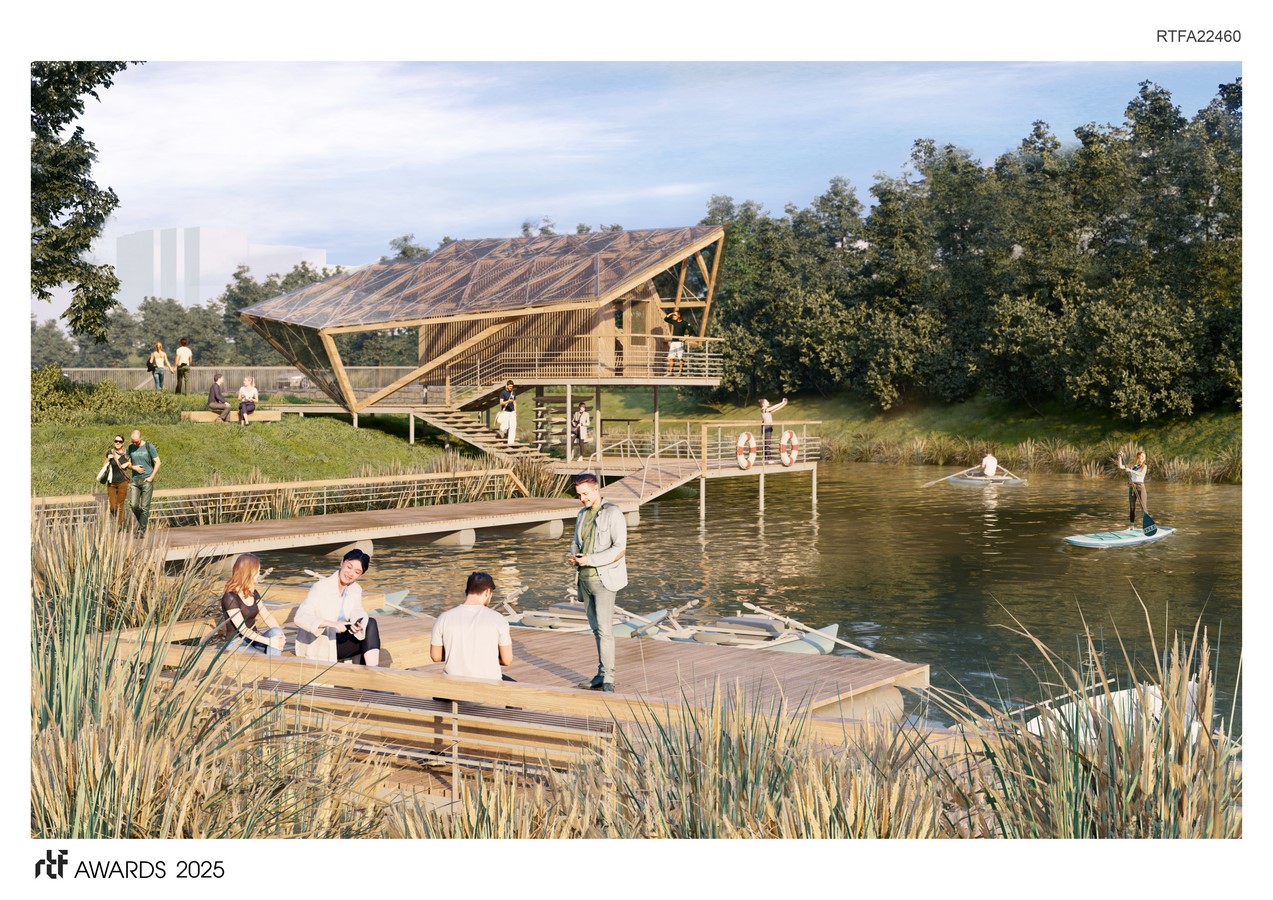
The authors of the project, with the participation of the city administration, organized an interdisciplinary socio-methodological discussion platform, where the architects acted as moderators of the work process, identifying and structuring urban problems and the wishes of residents, who are co-authors determining city-forming strategies.
Various resources and investments were identified and combined to create an architectural, multifunctional tool in which increased natural values and public access to nature go hand in hand, defining the thematic and functional parameters of the recreational infrastructure.
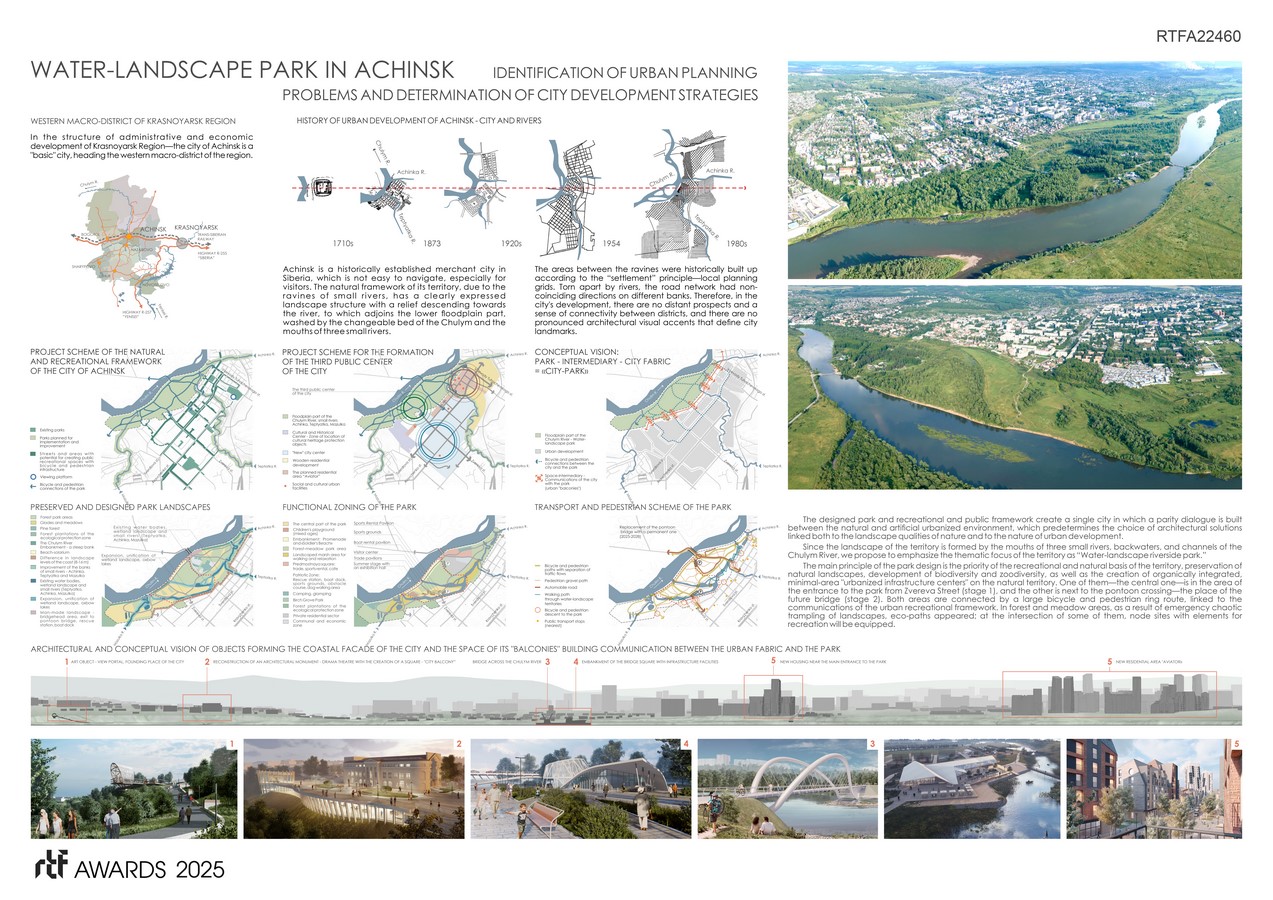
The unique natural area of the wide floodplain of the Chulym River adjacent to the urban development has enormous potential, but this area has historically been “torn away” from the fabric of the city, which “turned its back to the river and the coastal strip.” This contradiction led us to the topic of searching for communications, both physical and visual contact, and to the desire to create a feeling of “the presence of the river and the park nearby” for every resident of Achinsk.
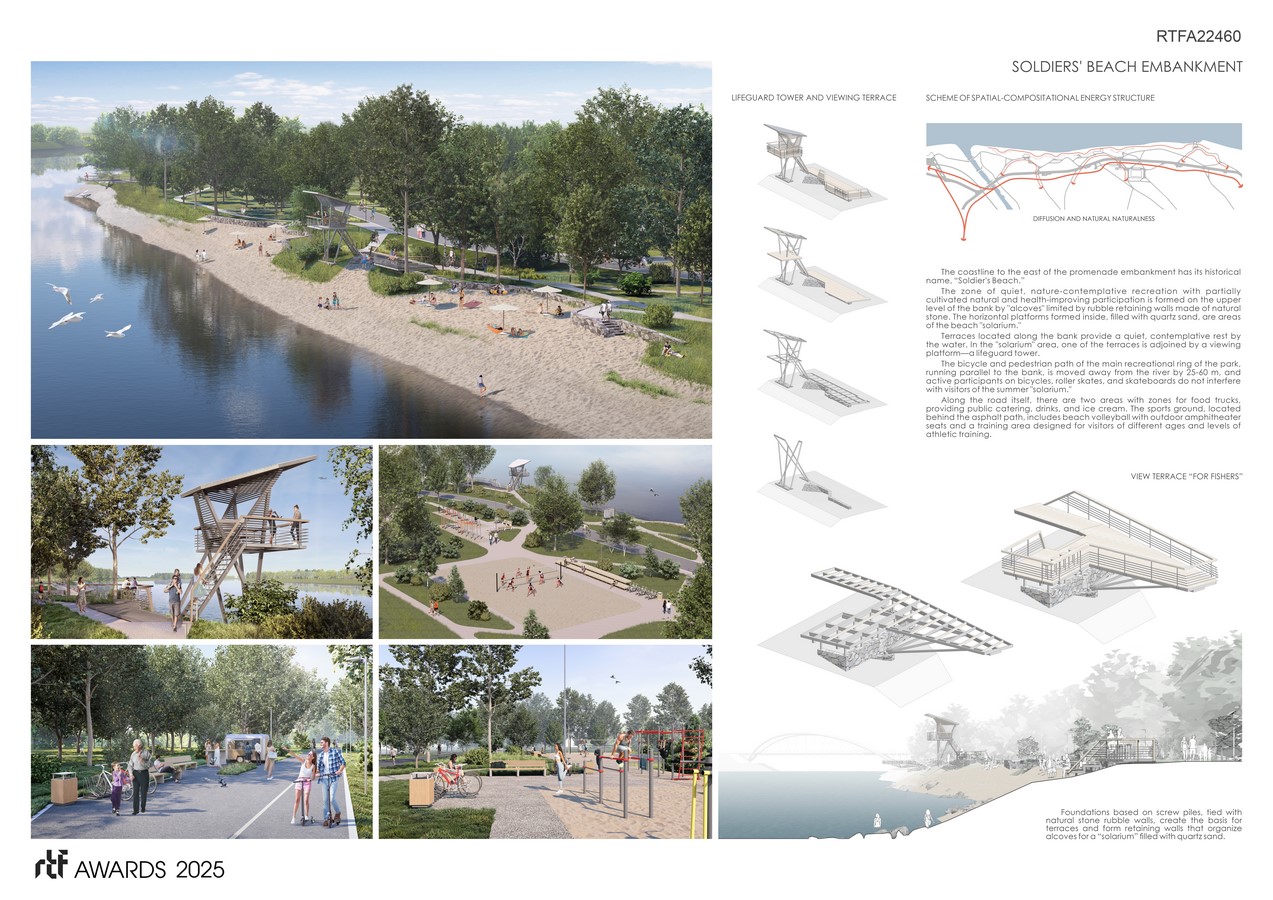
On the border of the city and the park, on a natural drop in relief, a public space is created as an “intermediary” between the city and nature, interpreted as “urban balconies” that are part of the emerging river façade of the city.
The floodplain territory was once penetrated by branches of the Chulym riverbed, which later turned into channels and oxbow lakes, and unique wetland landscapes appeared in these places. Three of its tributaries flow into the Chulym at this place. These territories are the habitat of many waterfowl and near-water birds, water voles, hares, muskrats, and beavers.
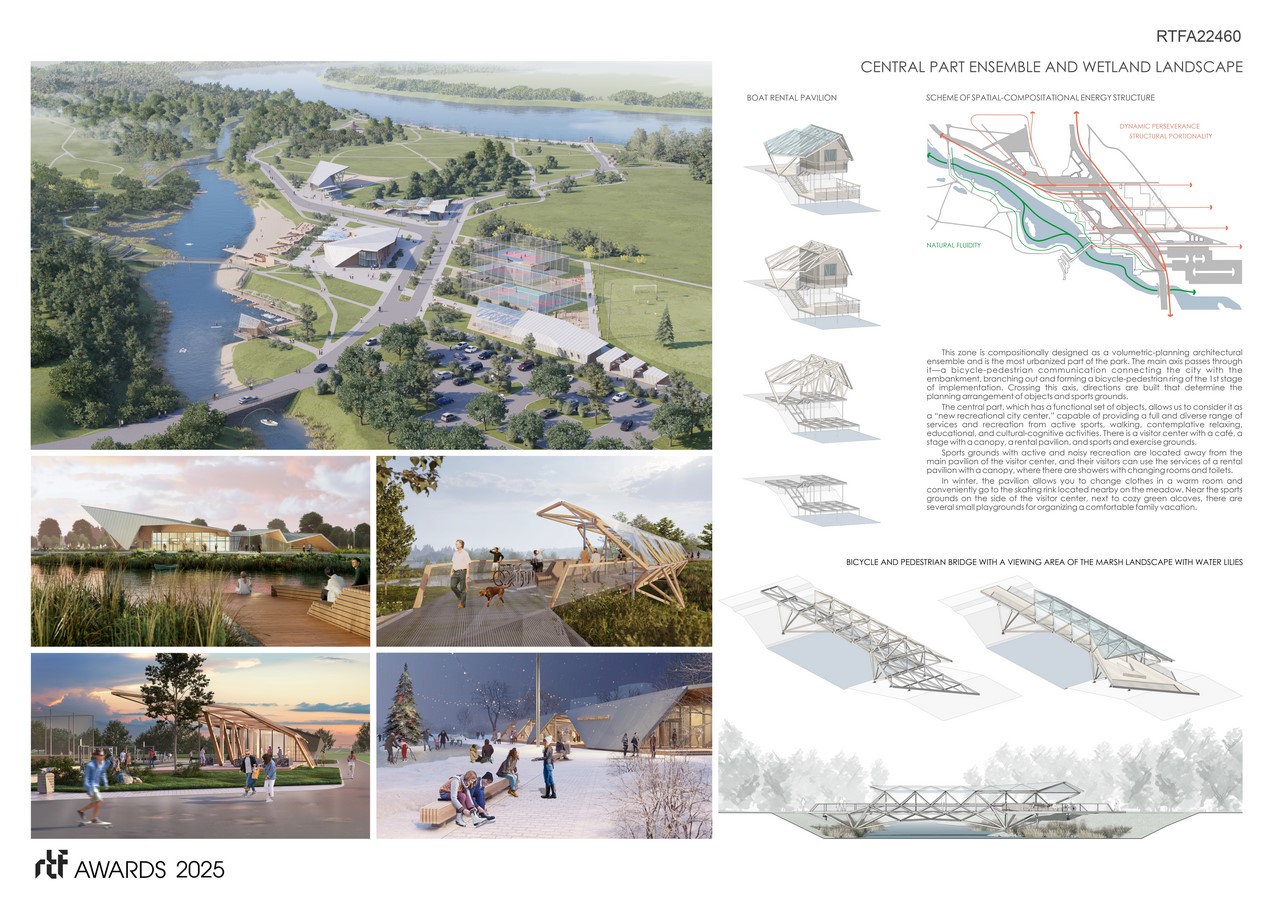
The park implementation involves several stages of design and construction based on the principles of self-sufficiency of stages and the possibilities of stage-by-stage financing through various departmental federal investment programs and public-private partnerships.
At present, an analysis of the natural landscape and urban development specifics of the city has been completed with the definition of key urban development strategies (2023-2024), and a project of engineering solutions and water-landscape design has been completed (2024-2025, implementation 2025-2027). The implementation of the water-landscape park is planned in three stages. The project submitted for the competition is stage 1 of the park (2024-2025, implementation 2025-2026), and the design of stages 2 and 3 of the park is also envisaged (2026-2027, implementation 2027-2028).
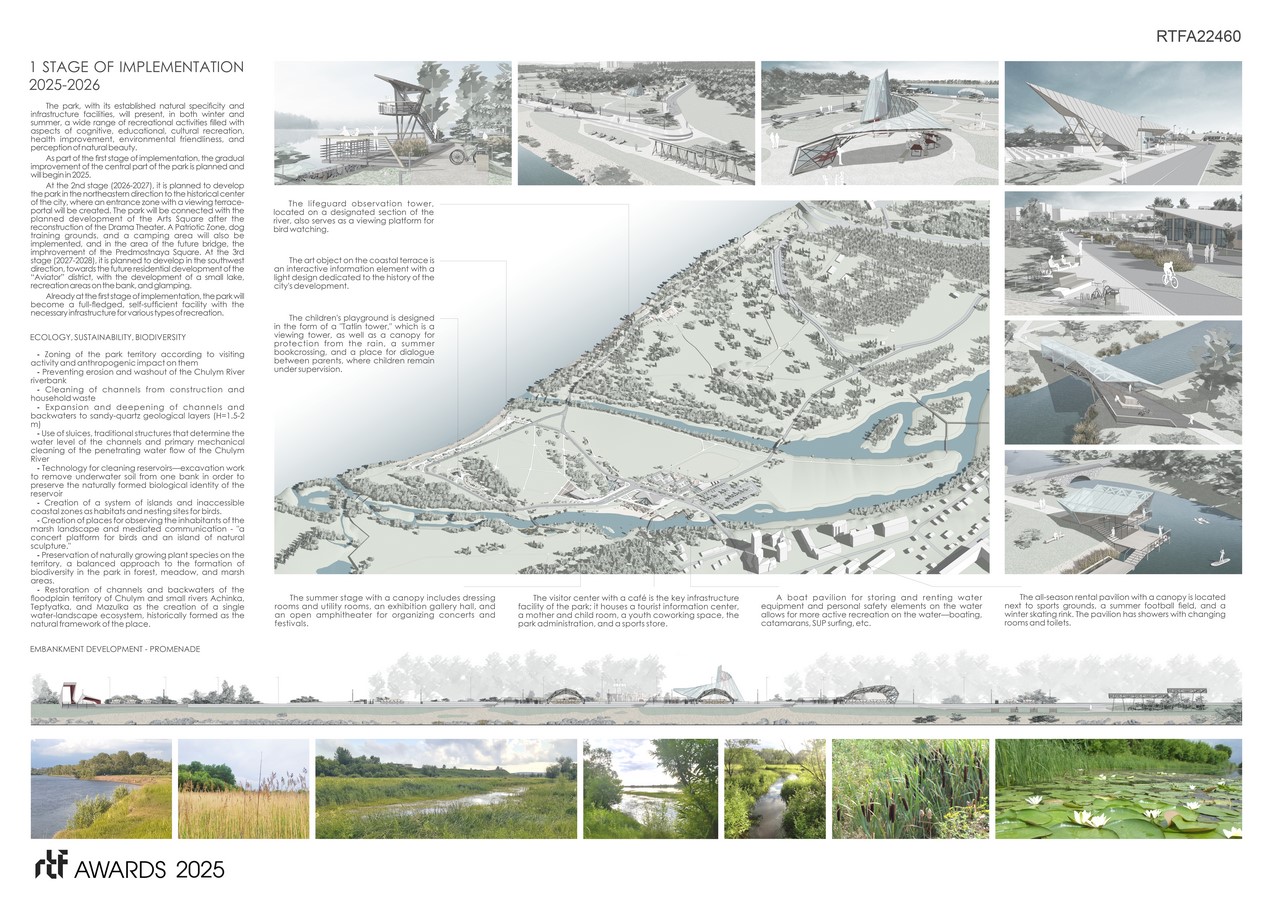
We design using compositional, constructive, and technological modeling based on spatial-fractal shaping, which determines our design methodology for working with architectural objects of the park and small forms. All this allows us to design individual objects that interact harmoniously with nature and its landscape, having symbolic and figurative qualities determined by the cultural codes of the author’s vision of the architect as a subject of the design territory, revealing its identity.
The peculiarity of our approach to construction is that, using screw piles for foundations, it is possible to perform assembly installation of products brought from the factory, and later, if there is no need for this object, it can be quickly disassembled, the pile elements can be unscrewed and moved to another place, preserving the integrity of the natural area.


